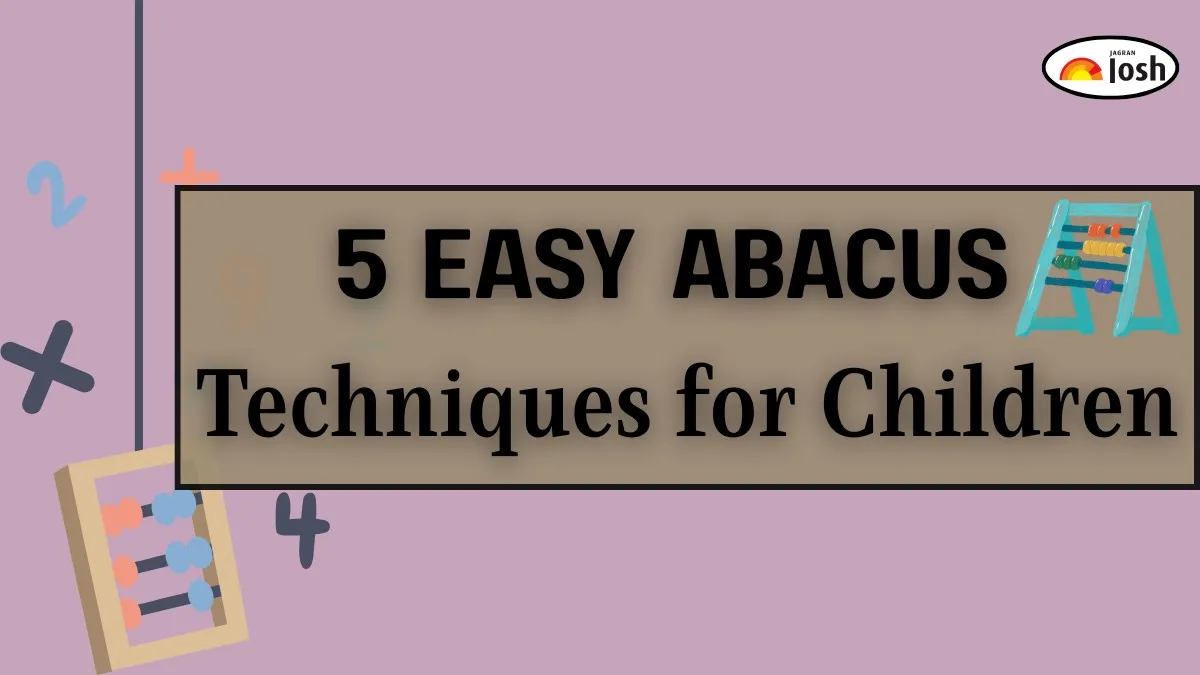The correct resources may make learning mathematics engaging and dynamic, and the abacus is one such resource that aids kids in developing their computation abilities. The ancient counting device known as the abacus strengthens memory, increases focus, and establishes a solid foundation in numbers. Children in school find that utilizing an abacus not only simplifies but also enhances their interest in math. Every child should be aware of these five simple yet crucial abacus practices to improve their mental math skills.
Also Read: Top 5 Abacus Learning Apps for Kids in 2025
What are the 5 Easy Techniques for Abacus
1. One-Hand and Two-Hand Techniques
Beginners typically begin by moving the beads with both hands, using their thumb and index finger. They switch to the one-hand technique as their confidence grows, which allows them to complete computations more quickly and accurately with just one hand.
2. Bead Value Understanding
The abacus teaches kids that the position of each bead determines its value. Typically, the lower beads stand for one unit, whereas the top beads can stand for tens or fives. The secret to tackling more complex issues is knowing place value.
3. Number Visualization (Image Abacus)
Children begin to visualize the abacus as they work through issues with practice. The "image abacus" or "mental abacus" method lets children do math without a tangible tool by enhancing their memory and imagery abilities.
4. Addition and Subtraction Using Complementary Numbers
In order to calculate complicated numbers more quickly, youngsters learn to use complimentary pairings (for example, 5 + 3 = 8, which allows them to subtract 2 from 10) rather than moving many beads. For mentally performing addition and subtraction quickly, this method is useful.
5. Finger Movement Coordination
It's crucial to move your fingers correctly. Youngsters are instructed to move beads up or down using particular fingers. This facilitates the development of speed, discipline, and coordination when performing calculations.
Bonus Technique: Skip Counting for Faster Multiplication
Children learn how to use the abacus to skip count in addition to basic operations, which speeds up their multiplication problem-solving. Jumping in groups of two, five, or ten helps children become more accustomed to multiplication tables and improves their understanding of numerical patterns.
How does Abacus help Children?
-
Children can develop their mental math and arithmetic skills with the help of the amazing abacus.
-
Children use the abacus's beads to practice mental calculations and number visualization.
-
This method increases their computation speed and accuracy while also strengthening their general mathematical skills.
-
Kids gain a deep comprehension of number relationships and patterns as they get better at using the abacus, which makes it easier for them to tackle challenging arithmetic tasks.
-
The abacus is more than simply a tool; it's a brain-development tool that helps kids get more comfortable with numbers.
By learning these five easy strategies, children can become more proficient in mental math, become less reliant on calculators, and take pleasure in solving mathematical problems. Abacus learning should be promoted by parents and schools to give children a better mathematics foundation in their early years.
Also Check:
Top 5 Abacus online classes for kids in India
India's Top 10 Abacus Competitions 2025
